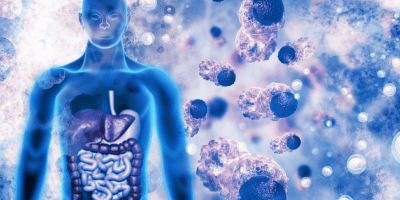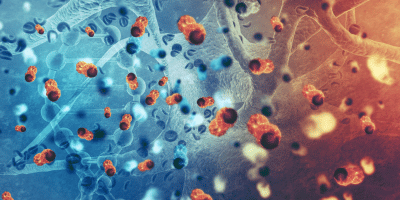Which Of The Following Statements Is True Of Stem Cells
Stem cells have been a major focus in the research on diseases for the potential of enhancing their treatment not only through the transformation of several diseases. They offer some distinct attributes and potential that make them ideal for use in reconstructive medicine, pharmaceutical purposes, or studying human growth and development. In this blog, we will be focusing on real factual information about stem cells contrary to so many myths and misconceptions and find out which of the following statements is true of stem cells.
Which Statement Is True About Stem Cells
1. Stem Cells Have the Ability to Differentiate into Various Cell Types
Stem cells are unique because they can differentiate into multiple cell types. This property is known as pluripotency in the embryonic stem cells (ECSs), and it also allows the stem cell to develop into any of the cell types that are found in the human body. Adult stem cells mesenchymal stem cells (MSCs) and hematopoietic stem cells (HSCs) are multipotent which means that they can develop into a limited range of cell types related to their tissue origin.
Significance:
Their ability is the foundation for regenerative medicine. For example, pluripotent stem cells can regenerate damaged tissues or organs and they are hope for multiple conditions such as heart disease, spinal cord injuries, and neurodegenerative disorders.
2. Stem Cells Can Self-Renew
Stem cells can renew which means that they can divide and produce copies of themselves over longer times. This characteristic is important to maintain the stem cell populations in the body.
Significance:
Self-renewal makes sure that the a consistent supply of stem cells for tissue repair and maintenance during an individual’s whole life. This aspect is important for stem cell therapies as it helps to produce a large quantity of the stem cells that are needed for immediate treatment.
3. Embryonic Stem Cells Are Extracted from Early-Stage Embryos
Embryonic stem cells are derived from the inner cell mass of a blastocyst which is an early-stage embryo that is formed approximately five days after fertilization. These cells are pluripotent and they can develop into any cell type in the body.
Significance:
The pluripotency of the ESCs makes them feasible for research and therapeutic applications. However, their use raises some ethical considerations that lead to the development of alternative sources like induced pluripotent stem cells (iPSCs).
4. Induced Pluripotent Stem Cells (iPSCs) Are Created by Reprogramming Adult Cells
iPSCs are the adult cells mainly skin or blood cells that have been genetically reprogrammed to an embryonic stem cell-like state. This reprogramming powers them with pluripotency which is similar to the ESCs.
Significance:
iPSCs provide an alternative to ESCs, avoiding ethical issues that are associated with embryonic stem cells. They are also important for personalized medicine as iPSCs can be derived from the patient’s cells which ultimately reduces the risk of the immune rejection.
5. Adult Stem Cells Are Found in Various Tissues
Adult stem cells are also known as somatic stem cells and they are found in multiple tissues including bone marrow, fat, and muscle. They are typically multipotent and they play a major role in maintaining and repairing the tissues in which they are found.
Significance:
Adult stem cells are important for everyday tissue repair and regeneration. They can be used to treat multiple diseases that include therapies related to bone marrow transplants for leukemia and they don’t have ethical concerns associated with the ESCs.
Debunking Common Misconceptions
Misconception 1: All Stem Cells Are the Same
True Statement: Stem cells vary in their properties and their uses. For example, embryonic stem cells are pluripotent, adult stem cells are multipotent and iPSCs are reprogrammed cells that copy the pluripotency of the ESCs. To effectively apply stem cells in research and therapy it’s important to know these differences.
Misconception 2: Stem Cell Therapy Is a Cure-All Solution
True Statement: It’s true that stem cell therapy holds immense potential but is not a universal cure. The treatments that exist for stem cells like bone marrow transplants are only used for specific conditions. But many other applications are in the experimental stages and they require extensive research and clinical trials to ensure safety.
Misconception 3: Stem Cell Research Only Involves Embryos
Stem cell research comprises multiple sources that include adult stem cells and iPSCs that don’t involve embryos. Multiple advancements in the iPSC technology have increased the scope of stem cell research and provided more ethical and practical alternatives to embryonic stem cells.
Applications of True Stem Cell Statements
Regenerative Medicine
Stem cells are of great importance for regenerative medicine because of their ability to differentiate and self-renew. For example, scientists are finding the use of the iPSCs to regenerate the heart tissue after suffering a myocardial infarction (heart attack). Stem cells also have the potential to treat spinal cord injuries by regenerating the nerve cells and restoring the whole function.
Treatment of Degenerative Diseases
Degenerative diseases like Parkinson’s and Alzheimer’s involve the loss of specific cell types. By utilizing the different abilities of the stem cells, researchers can easily replace those lost cells. For example, in Parkinson’s disease, iPSCs can be induced to produce dopamine-producing neurons that can replace the degenerative ones.
Drug Testing and Development
Stem cells are the major source of drug testing and development. Scientists can easily create disease models using iPSCs that are derived from the patients and it also helps for the screening of the potential drugs on human cell types. This approach is beneficial as it helps to understand the effects of drugs on humans.
Personalized Medicine
The field of personalized medicine is opened by the creation of the iPSCs from a patient’s cells. These cells are useful and can be used to generate patient-specific tissues that are used to study disease mechanisms or develop customized solutions. Personalized stem cell therapies can reduce the risk of immune rejection and improve treatment outcomes.
Ethical Considerations and Future Directions
Mostly a question is raised “Which of the following statements about stem cells is true?” The major aspect of stem cell research is the ethical concerns which include the use of embryonic stem cells. The development of the iPSCs has eased some ethical issues but as the field is evolving ongoing dialogue and ethical guidelines are necessary.
The future of stem cell research and therapy is promising. The precision of stem cell therapies can be increased by advances in genetic engineering such as SRISPR-Cas9. Furthermore, clinical trials are done to expand the range of the conditions that can be treated with stem cells.
Conclusion
Stem cells are the main area of medical research and they offer vast potential for the treatment of multiple diseases. The most widely searched question is “Which statement is true about stem cells”? The research related to stem cells shows their unique properties including their ability to differentiate into multiple cell types and renew them which shows that they can be used for regenerative medicine, personalized therapy, and drug development. Stem cell utilization will continue to evolve in the future and more developments in the research and ultimately patient outcomes will be increased by observing which of the following statements about stem cells is true. Visit our Facebook account for more details.



